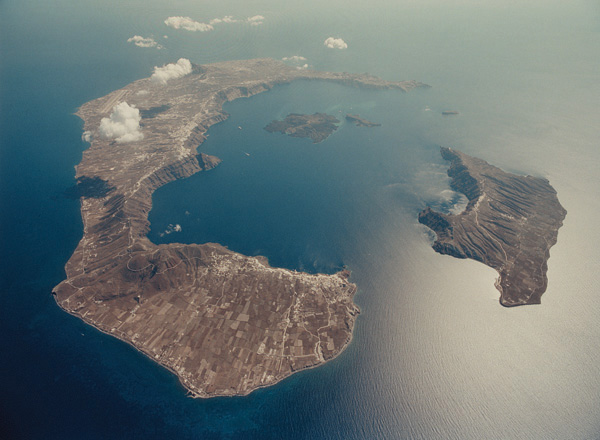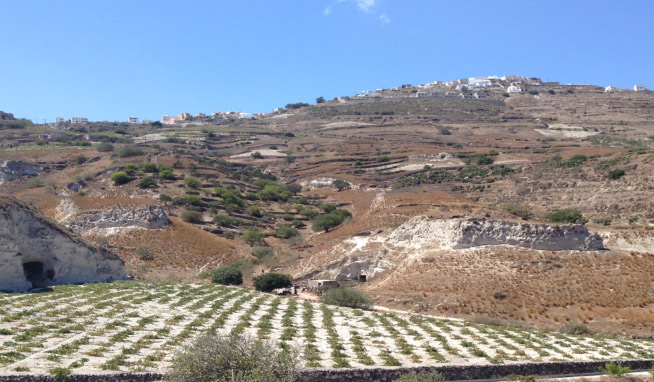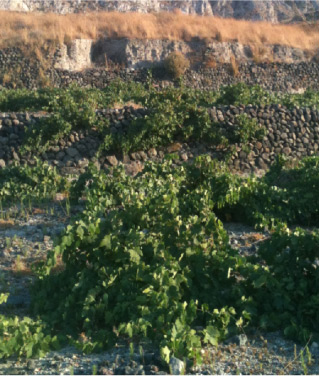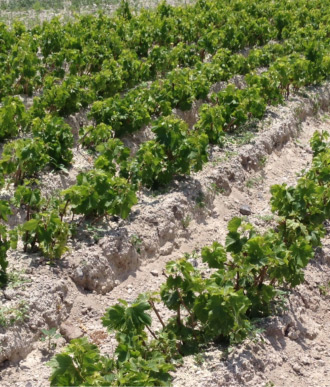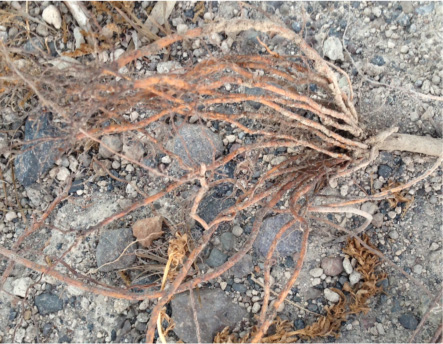Weather conditions are extreme on Santorini; it is a semi-arid island, rain falls mainly in winter; salt-loaded wind blows hard all year long and strong sunshine beats down over a long period.
There is extremely poor volcanic soil: a layer of volcanic ash, sands, pumice stone, cinders on a sub-soil comprised of volcanic tuff. Organic matter is scarce. A considerable risk of seismic activity exists here and reserves of freshwater are rare and costly.
- Indigenous grape varieties such as Assyrtiko, an emblematic variety of this island, enables growers to produce fine dry, lively white wines or semi-sweet whites using the raisining technique. There is also Aidani, a white grape and Mavrotragano, a black grape.
- An unusual pruning method in the shape of basket laid on the ground is used to protect the grapes from weather extremes.
- Phylloxera has never attacked this island and explains the fact that vines are planted directly without the need for grafting.
- Winegrowing genetic heritage is abundant and still largely-protected.
- The harshness of the climate, linked to the small size of the island and its vineyards.
- Despite growing real-estate pressure to accommodate tourists, a handful of estate owners are working together to conserve this exceptional winegrowing heritage.
The winegrower must:
- Select and mark old, healthy vines whose growth performance is satisfactory and which produce good grapes.
- Prepare an adapted area near the vineyard’s production buildings to monitor the young vines and water them occasionally.
- Prepare the nursery with structuration, a rational amount of soil-enriching agent before planting vines in the soil.
- Change the piece of land used for the vine nursery every year, so as to regenerate the soil.
- With the basket-style pruning method, branches lay on the ground. To form new vines, woods are selected in autumn, once the leaves have fallen. Each wooden branch must measure at least 50cm.
- This preliminary pruning stage makes it possible to hoe more easily soils near older vines in grape-producing plots.
- In winter, after a distinct spell of cold weather, the nursery is dismantled. The root system observed for young vines is impressive: numerous main roots, width of diameter and length are a guarantee of good growth and exceptional vitality.
